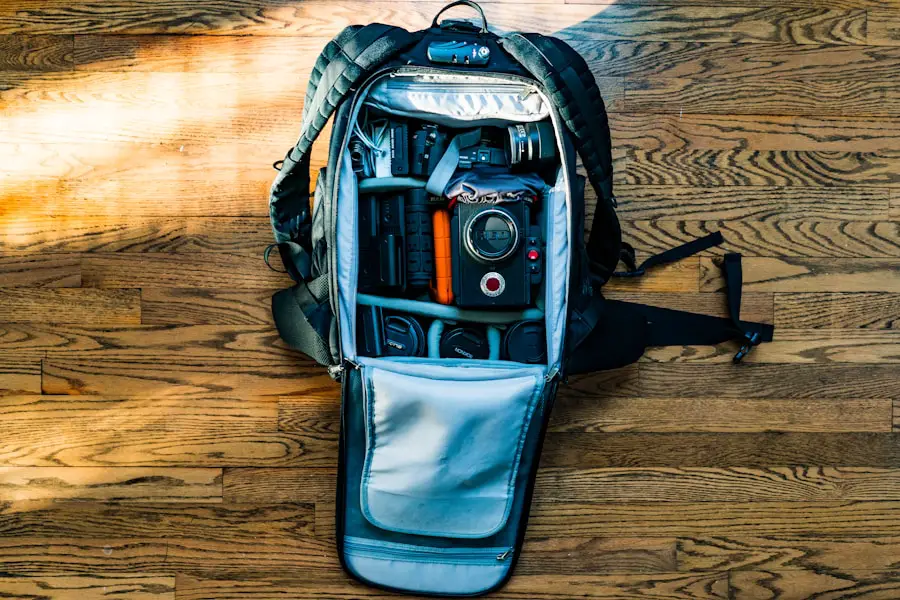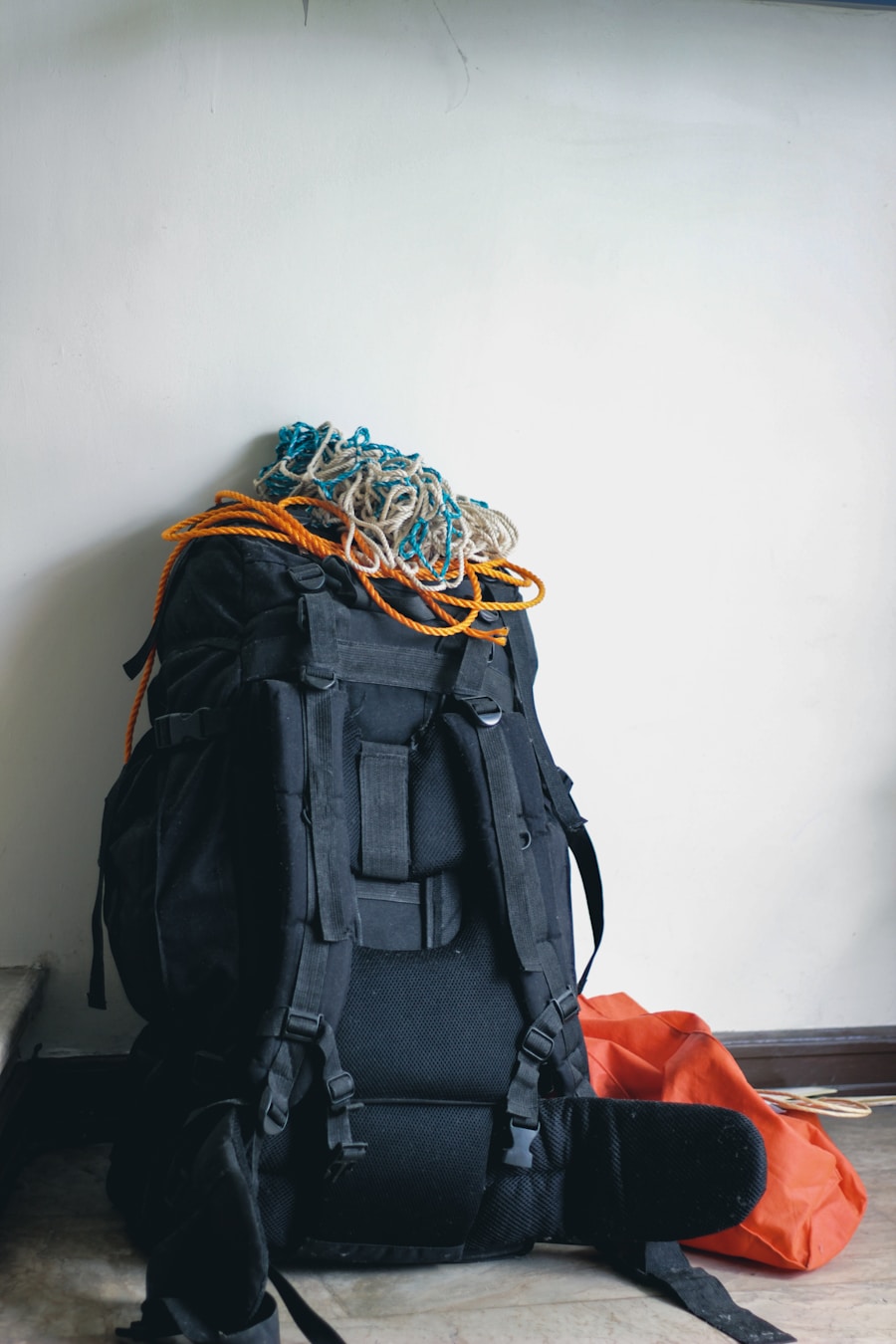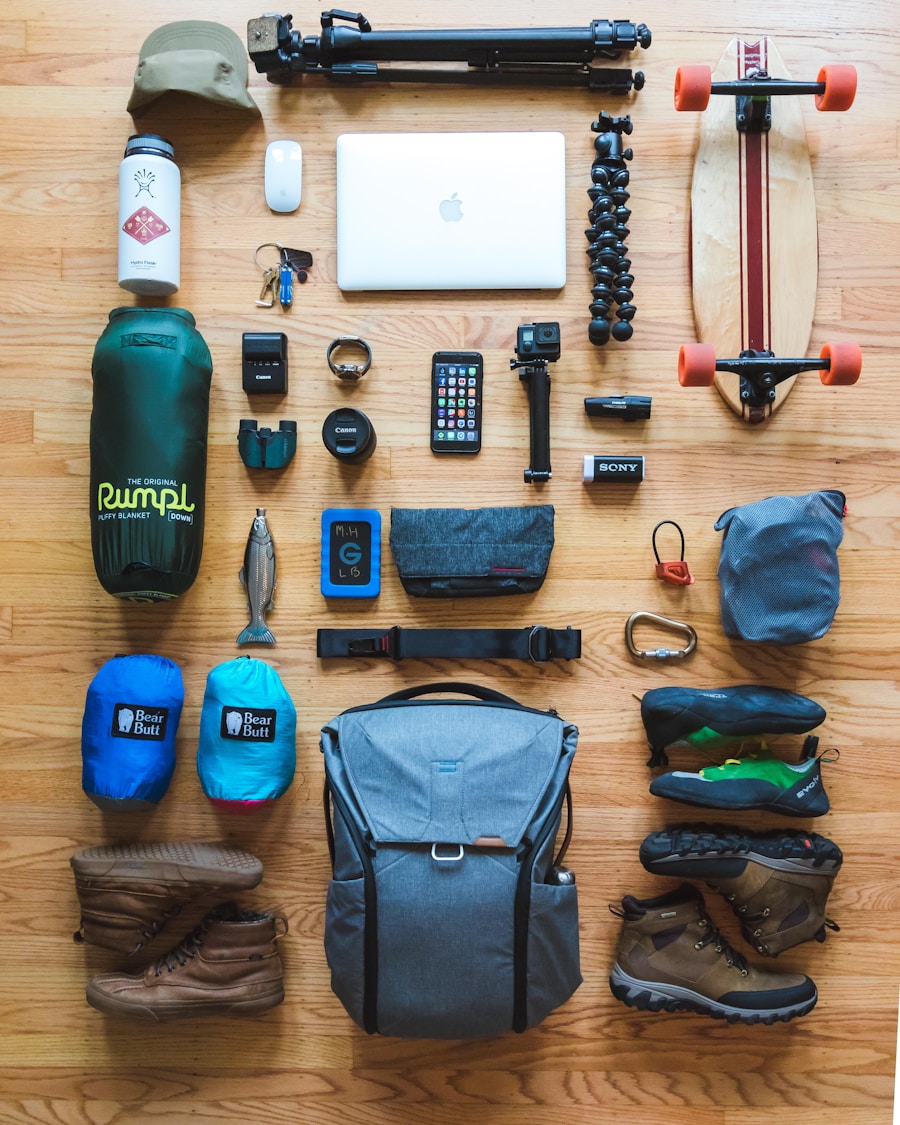A properly fitting hiking backpack is not merely a luxury; it is a necessity for anyone who intends to venture into the great outdoors. The significance of a well-fitted backpack cannot be overstated, as it directly impacts your comfort, endurance, and overall hiking experience. When a backpack fits correctly, it allows for optimal weight distribution, reducing strain on your back and shoulders.
This is particularly crucial during long hikes where fatigue can set in quickly if the load is not balanced properly. A backpack that fits well can mean the difference between an enjoyable trek and a painful ordeal. Moreover, a well-fitted backpack enhances your mobility and stability on uneven terrain.
When the pack is snug against your body, it minimizes the risk of shifting or bouncing, which can lead to instability and potential injury. This is especially important when navigating rocky paths or steep inclines. A backpack that moves with you rather than against you allows for greater freedom of movement, enabling you to focus on the trail ahead rather than the discomfort of your gear.
Thus, understanding the importance of a properly fitting hiking backpack is foundational for any outdoor enthusiast aiming to maximize their hiking experience.
Key Takeaways
- A properly fitting hiking backpack is essential for comfort and safety on the trail.
- Choosing the right size and style of backpack for your body type is crucial for a comfortable fit.
- Adjusting the shoulder straps, chest strap, and hip belt is necessary for weight distribution and support.
- Ensuring the backpack’s torso length matches your body’s measurements is important for a proper fit.
- Proper load distribution and balance are key for comfortable hiking and preventing strain.
Choosing the Right Size and Style of Hiking Backpack for Your Body
Selecting the right size and style of hiking backpack is a critical step in ensuring comfort and functionality on the trail. Backpacks come in various sizes, typically measured in liters, which indicates their capacity. For day hikes, a pack ranging from 20 to 30 liters is generally sufficient, while multi-day treks may require packs of 50 liters or more.
However, size alone does not dictate suitability; the style of the backpack also plays a significant role. For instance, a frameless daypack may be ideal for short excursions, while a larger, framed backpack provides better support for heavier loads over extended periods. When choosing a backpack, it is essential to consider your body type and personal preferences.
Different brands often have unique fits that cater to various body shapes. For example, some backpacks are designed specifically for women, featuring shorter torso lengths and narrower shoulder straps to accommodate anatomical differences. Additionally, adjustable features such as removable hip belts and varying torso lengths can help customize the fit further.
Trying on multiple styles and sizes while loaded with weight can provide insight into what feels most comfortable and functional for your specific needs.
Adjusting the Shoulder Straps and Chest Strap for a Comfortable Fit

Once you have selected a suitable backpack, the next step involves adjusting the shoulder straps and chest strap to achieve a comfortable fit. The shoulder straps should be snug but not overly tight; they should hold the pack close to your body without digging into your shoulders. Ideally, when adjusted correctly, the straps should distribute the weight evenly across your shoulders, preventing pressure points that can lead to discomfort during long hikes.
A common mistake is allowing the straps to hang too loosely, which can cause the pack to sway and shift as you move. The chest strap plays a crucial role in stabilizing the load as well. It should be positioned across your sternum and adjusted so that it holds the shoulder straps in place without constricting your breathing.
A well-adjusted chest strap helps keep the pack from shifting during movement, which is particularly beneficial when navigating challenging terrain. It also aids in maintaining proper posture by encouraging an upright stance rather than slouching forward under the weight of the pack. Taking the time to adjust these straps properly can significantly enhance your comfort level on the trail.
Properly Adjusting the Hip Belt for Weight Distribution and Support
| Adjustment | Effect |
|---|---|
| Properly tightening the hip belt | Improves weight distribution and reduces strain on shoulders |
| Positioning the hip belt over the hip bones | Provides optimal support and stability |
| Ensuring the hip belt is snug but not too tight | Prevents discomfort and allows for proper movement |
| Adjusting the hip belt angle for individual body shape | Enhances comfort and weight distribution |
The hip belt is one of the most critical components of a hiking backpack when it comes to weight distribution and support. A well-fitted hip belt transfers much of the pack’s weight from your shoulders to your hips, which are better equipped to handle heavy loads over long distances. To adjust the hip belt correctly, it should sit comfortably around your hips rather than your waist; this positioning allows for optimal weight transfer and stability.
When fastened, the belt should feel snug but not restrictive, allowing for freedom of movement while still providing support. In addition to comfort, an adjustable hip belt can significantly enhance your hiking experience by improving balance and reducing fatigue. Many modern backpacks feature padded hip belts that contour to your body shape, providing additional comfort during extended wear.
Some hip belts also come with pockets for easy access to snacks or small essentials without having to remove your pack. Ensuring that your hip belt is properly adjusted not only enhances comfort but also contributes to better overall performance on the trail.
Making Sure the Backpack’s Torso Length Matches Your Body’s Measurements
An often-overlooked aspect of selecting a hiking backpack is ensuring that its torso length matches your body’s measurements. The torso length refers to the distance from the top of your shoulders to your hip bones, and it varies significantly among individuals. Many backpacks come with adjustable torso lengths or are available in different sizes (small, medium, large) to accommodate various body types.
A backpack that is too long or too short can lead to discomfort and improper weight distribution, resulting in fatigue or even injury. To determine your torso length accurately, you can measure yourself or seek assistance from a knowledgeable salesperson at an outdoor gear store. Once you have this measurement, you can compare it against the specifications provided by different backpack manufacturers.
Some brands even offer fitting guides that help you find the right size based on your height and torso length. Ensuring that your backpack’s torso length aligns with your measurements is essential for achieving a comfortable fit that supports you throughout your hike.
Ensuring Proper Load Distribution and Balance for Comfortable Hiking

Proper load distribution within your hiking backpack is vital for maintaining balance and comfort while on the trail. When packing your bag, heavier items should be placed close to your back and centered within the pack to keep the center of gravity aligned with your body. This positioning helps prevent excessive strain on your back and shoulders while allowing for better control over your movements.
Lighter items can be packed towards the top or outside pockets for easy access without compromising balance. Additionally, utilizing compression straps can help stabilize your load further by pulling excess fabric tight against the contents of your pack. This not only reduces bulk but also minimizes shifting during movement, which can lead to discomfort or instability on uneven terrain.
Regularly checking and adjusting your load as you hike can also help maintain balance; as items are consumed or removed from your pack, redistributing weight may be necessary to ensure continued comfort throughout your journey.
Checking for Proper Fit and Adjustments Throughout Your Hike
Even after taking all necessary steps to ensure a proper fit before hitting the trail, it is essential to check for adjustments throughout your hike. As you move and sweat, factors such as clothing layers or shifting weight can affect how your backpack feels against your body. Periodically stopping to assess how well your pack fits can help identify any discomfort early on before it becomes a more significant issue.
Adjusting shoulder straps or tightening the hip belt during breaks can make a noticeable difference in comfort levels as you continue on your journey. Listening to your body is crucial; if you start feeling pressure points or discomfort in specific areas, take a moment to readjust your pack accordingly. This proactive approach not only enhances comfort but also helps prevent injuries that could arise from prolonged improper fit or weight distribution issues.
By remaining attentive to how your backpack feels throughout your hike, you can ensure that you maintain an enjoyable experience on the trail.
Tips for Maintaining a Properly Fitting Hiking Backpack for Long-Term Comfort and Durability
Maintaining a properly fitting hiking backpack goes beyond initial adjustments; it requires ongoing care and attention to ensure long-term comfort and durability. Regularly inspecting all components of your pack—such as zippers, straps, and buckles—can help identify any wear or damage that may affect fit over time. Cleaning your backpack after each use is also essential; dirt and grime can accumulate in crevices and affect how well components function.
Most backpacks are machine washable or can be cleaned with mild soap and water; following manufacturer guidelines will help preserve materials. Additionally, storing your backpack properly when not in use can extend its lifespan significantly. Avoid leaving it in damp areas or direct sunlight for prolonged periods, as these conditions can degrade materials over time.
If possible, store it in a cool, dry place with minimal exposure to elements that could cause wear or damage. By taking these steps to maintain both fit and condition, you ensure that your hiking backpack remains a reliable companion on countless adventures ahead.
If you’re planning a hiking trip, you’ll want to make sure you have the right gear, including a properly fitted hiking backpack. One helpful article to check out is 5 Must-Have Portable Camping Stoves for Your Spring 2025 Adventures, which provides recommendations for essential camping equipment that can enhance your outdoor experience. Just like choosing the right camping stove, selecting the right hiking backpack is crucial for a successful and comfortable journey.
FAQs
What is the importance of fitting a hiking backpack?
Fitting a hiking backpack properly is important to ensure comfort, stability, and weight distribution while hiking. A well-fitted backpack can prevent discomfort, pain, and injury during long hikes.
How do I measure my torso length for a hiking backpack?
To measure your torso length for a hiking backpack, have someone use a flexible tape measure to measure from the bony bump at the base of your neck to the top of your hip bones. This measurement will help you determine the appropriate backpack size.
What are the key features to consider when fitting a hiking backpack?
Key features to consider when fitting a hiking backpack include the torso length, hip belt, shoulder straps, load lifters, and sternum strap. These features should be adjusted to ensure a snug and comfortable fit.
How should the hip belt of a hiking backpack fit?
The hip belt of a hiking backpack should sit on top of your hip bones and be snug but not too tight. It should be able to transfer the weight of the backpack to your hips, relieving pressure on your shoulders.
What is the proper way to adjust the shoulder straps of a hiking backpack?
The shoulder straps of a hiking backpack should be adjusted so that they are snug against your shoulders without digging in. They should be able to support the weight of the backpack without causing discomfort.
How do I know if a hiking backpack fits properly?
A hiking backpack fits properly if it feels comfortable and stable on your back, with the weight evenly distributed and minimal pressure points. It should also allow for easy movement and not cause any discomfort or pain.
